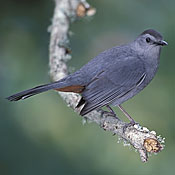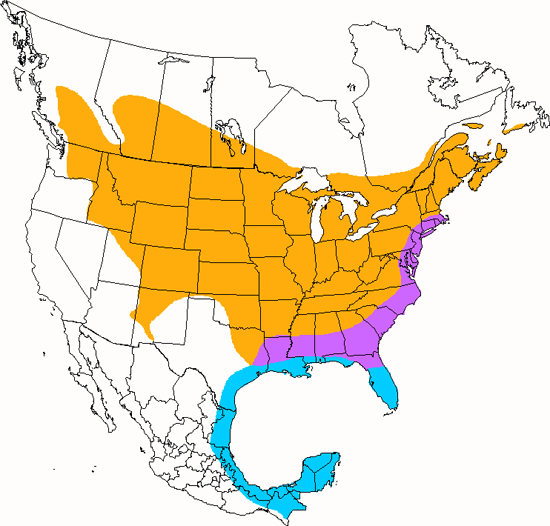Gray Catbird
Dumetella carolinensis

Perching

Length: 9 in. (22 cm )
Typically found in dense shrubbery and forest edge, the Gray Catbird can often be secretive and hard to see. In the southwest, it is found primarily in dense riparian vegetation. The bulky nest is made of grass and twigs and placed in a low bush. Its blue-green eggs make it difficult for cowbirds to hide their spotted brown eggs in the Catbird nest. During the winter, fruits and berries are a favorite food, but during the summer insects and spiders are preferred. Occasionally it mimics parts of other bird species\ songs. '
The four-digit banding code is GRCA.
Bibliographic details:
- Article: Gray Catbird
- Author(s): Dr. Biology
- Publisher: Arizona State University School of Life Sciences Ask A Biologist
- Site name: ASU - Ask A Biologist
- Date published:
- Date accessed:
- Link: https://askabiologist.asu.edu/activities/bird/gray-catbird
APA Style
Dr. Biology. (). Gray Catbird. ASU - Ask A Biologist. Retrieved from https://askabiologist.asu.edu/activities/bird/gray-catbird
Chicago Manual of Style
Dr. Biology. "Gray Catbird". ASU - Ask A Biologist. . https://askabiologist.asu.edu/activities/bird/gray-catbird
Dr. Biology. "Gray Catbird". ASU - Ask A Biologist. . ASU - Ask A Biologist, Web. https://askabiologist.asu.edu/activities/bird/gray-catbird
MLA 2017 Style
Be Part of
Ask A Biologist
By volunteering, or simply sending us feedback on the site. Scientists, teachers, writers, illustrators, and translators are all important to the program. If you are interested in helping with the website we have a Volunteers page to get the process started.





